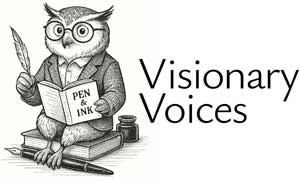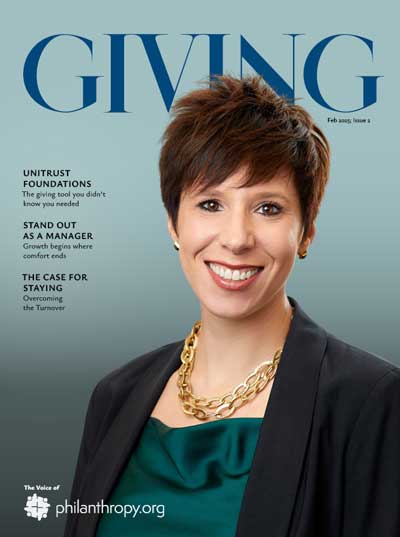Executive Summary
After 26 years of intensive nonprofit consulting, one truth emerges: Organizations that chase easy digital solutions for planned giving fundamentally misallocate resources while missing their most valuable prospects. This analysis demonstrates why solely relying on free online will platforms—despite their surface appeal—represents a costly detour from proven planned giving strategies. As Joe Garecht notes in Some Truth About Online Will Planners, the billions promised rarely become dollars delivered.
While these platforms may serve as supplementary tools for capturing incidental small bequests, organizations that treat them as comprehensive planned giving solutions fundamentally misunderstand both their donors and the economics of legacy giving.
Read this data before proceeding:
- Only 5.7% of Americans include any charity in their will¹
- Average bequest from online will platforms: $5,000 vs. $35,000+ from professionally advised estates²
- 73% of all charitable dollars flow to faith-based organizations³ — which largely avoid digital will platforms
- Secular nonprofits (which capture far less in bequests) are the ones adopting these tools — essentially fishing in the wrong pond
- 70% of charitable bequests are made within 5 years of death — a stage when donors overwhelmingly rely on attorneys, not online tools
- 89% of high-net-worth estates (over $5 million) use professional advisors, not online tools⁴
The Economic Reality Check
Current data reveals a stark truth about charitable estate planning:
- Only 5.7% of Americans include any charity in their will¹
- Charitable bequests represent 8% of total giving ($42.68 billion in 2023)²
- The median charitable bequest from online will platforms: $5,000³
- The average bequest from professionally advised estates: $35,324⁴
These numbers expose a fundamental disconnect: while bequest dollars flow predominantly from wealthy estates, digital platforms capture only the margins.
Where Digital Platforms Fail: A Financial Analysis
The Prospect Mismatch
Research definitively shows that 89% of estates valued over $5 million use professional advisors, not online tools⁵. Yet these are precisely the prospects that transform organizations.
Call it back-of-the-napkin math if you like. The point isn’t precision — it’s to show how much money is wasted chasing digital scraps while ignoring real donors.
Digital Platform Mathematics
- Annual cost: $15,000⁶
- Average wait for realization: 15–35 years⁷
- 25-year investment: $375,000
- Typical bequest through these tools: $5,000
- 100 bequests over decades = $500,000
- Net after 25 years: $125,000
Professional Outreach Campaign
- Staff investment: $15,600 annually (5 hours a week)
- 5-year campaign cost: $78,000
- Average cultivated bequest: $50,000–$90,000
- Just 5 commitments at $50,000 = $250,000
- One typical major bequest at $90,000+ nearly equals decades of digital “returns”
- Net in 5 years: $172,000+
The math isn’t close.
A quarter-century tied to a digital platform may dribble out $125,000.
Five years of disciplined cultivation produces multiples of that—and the upside isn’t capped at five-figure scraps. One serious relationship can outweigh an entire generation of online trickle-gifts.
The Faith Factor: Where Real Bequests Flow
Religious organizations dominate charitable giving. Using the narrow definition (congregations and religious media), they receive 23% of all giving—still the single largest category¹⁴. But that dramatically understates religious giving. When researchers include all faith-based organizations—Catholic hospitals, religious universities, faith-based social services like the Salvation Army—the share jumps to 73% of all U.S. charitable dollars¹⁵.
- Americans with religious affiliation give $1,590 annually versus $695 for the non-religious¹⁶
- Regular worship attenders give $2,935 annually versus $704 for non-attenders¹⁷
- 62% of households with regular worship attendance give to charity versus 46% with no religious affiliation¹⁸
Here lies the central irony: secular nonprofits eagerly adopt digital will platforms, while faith-based organizations—which receive the vast majority of bequest dollars—largely ignore them. Our research found virtually no evidence of widespread digital will platform adoption among churches or faith-based organizations. Instead, these organizations rely on:
- Personal relationships cultivated over decades
- Face-to-face pastoral conversations about legacy
- Community testimonials during worship services
- Integration with spiritual counseling about mortality and meaning
This approach works. Faith-based organizations succeed in securing bequests not despite avoiding digital tools, but because they understand what actually motivates legacy giving: relationships, shared values, and spiritual community.
Digital platforms assume charitable bequests are transactional—fill out a form, check a box, done. But the largest segment of bequest giving flows from donors who view their gifts as expressions of faith, extensions of lifelong spiritual commitments, and participation in enduring purposes. These donors work with their pastors, not platforms. They discuss legacy with their faith communities, not chatbots. They want their gifts blessed, not processed.
Secular nonprofits investing in digital will platforms are essentially fishing in the wrong pond with the wrong bait. They are automating a process that, for the most generous bequest donors, is inherently personal and spiritual.
The Attention Deficit
Board members should note: Every dollar and every hour spent on low-yield activities represents resources diverted from high-impact opportunities.
Real example from a recent consultation:
- 7 hours over four meetings selecting event florals, dishware, and décor
- 2 hours debating invitation fonts and designs
- 6 hours on catering tastings
- Additional staff time coordinating printing, advertising, and press releases
- Thousands spent on “wow-factor” extras
- Result: Gala grossed $148,000 … and netted only $2,900
(They never do a proper P&L — so the board celebrated the gross, never realizing the net.)
Those same 52 hours could have completed more than 100 planned giving calls, secured 10–15 legacy commitments, and generated $1–2 million in future gifts.
The Sector’s Structural Challenge
The Incentive Gap
Unlike private sector environments with immediate performance rewards, nonprofits operate with:
- No commission structures
- Limited advancement opportunities
- Mission-based rather than metrics-based evaluation
- Average salary increases of 2.3% annually (versus 4.1% corporate)⁸
This creates what researchers term “motivational drift”—where staff naturally gravitate toward visible, low-effort activities over strategic, long-term initiatives⁹.
The Paradox of Expectations
Studies show nonprofit professionals score higher on “mission commitment” but lower on “performance urgency” compared to for-profit peers¹⁰. The sector tends to attract individuals motivated by mission more than margin—yet, paradoxically, many still carry expectations borrowed from the for-profit world. The result is a structural mismatch: limited incentives on one hand, higher expectations on the other. This manifests as a preference for process over outcomes, an emphasis on activity rather than impact, and the conflation of “busy” with “productive.” Boards must recognize this dynamic—not as an excuse, but as a reminder that leadership needs to set clear priorities and expectations.
They Target the Wrong People
- High-net-worth donors use attorneys, not websites.
- 89% of estates over $5M rely on advisors.
- Platform users average just $5,000 per bequest.
They Ignore Where Bequests Actually Go
- Religious groups receive 23% of all giving.
- Broadly defined, faith-based orgs capture 73%.
- Religious donors give 4× more than non-religious.
- Faith-based orgs rarely use platforms—yet dominate bequests.
They Misunderstand Donor Psychology
- Major donors want relationships, not forms.
- Legacy giving is personal and often spiritual.
- Automation signals the opposite.
They Create Bad Optics
- Boards see staff choosing convenience over impact.
- Promotes the vendor’s brand more than the nonprofit’s mission.
- Suggests complacency and focus on small gifts over transformational ones.
The Opportunity Cost
- Every hour on platform management = lost donor cultivation.
- Decades-long, low-yield strategy.
- Staff avoid real relationship work.
They Miss the Demographics
- 70% of bequests happen within 5 years of death.
- Cultivation requires long-term relationships.
- Platforms can’t replace decades of personal connection.
And the math doesn’t work.
Nonprofits using digital will platforms waste hundreds of thousands to miss their best prospects and signal they prefer easy over effective. It reflects poorly on the organization.
What High-Performing Organizations Do Differently
Analysis of top-quartile fundraising organizations reveals consistent patterns¹¹:
- They Reject False Efficiency—understanding that “set and forget” solutions typically forget to deliver results. Instead, they invest in professional advisor cultivation (minimum 10 hours monthly), strategic bequest marketing (consistent, multi-channel), and direct donor engagement (personal, not automated).
- They Measure What Matters—tracking cost per confirmed bequest, time from identification to commitment, average bequest value by cultivation method, and professional advisor referral rates.
- They Align Resources with Opportunity—allocating planned giving effort based on potential return: 60% of time on prospects with $1M+ capacity; 30% on $250K–$1M prospects; 10% on broad market cultivation.
Critical Questions for Board Oversight
- ROI Reality: What is our actual cost per dollar raised through digital platforms versus traditional cultivation?
- Prospect Alignment: What percentage of our major gift donors would ever use an online will tool?
- Opportunity Cost: What high-value activities are displaced by managing digital platforms?
- Market Position: How does relying on automated tools position us relative to organizations investing in relationship-based strategies?
- Long-term Viability: Given that 68% of charitable dollars will transfer via estates over the next 25 years¹², can we afford to pursue suboptimal strategies?
The Path Forward: Excellence Over Ease
Immediate Actions for Boards
- Sunset digital platform contracts—or negotiate price down significantly
- If retained, ensure the platform is part of a comprehensive bequest program (and not the program itself)
- Reallocate resources to proven cultivation strategies
- Establish weekly planned giving time minimums (5 hours)
- Tie accountability to results, not activity
If retained, an online will planner should only be one component of a comprehensive bequest program — never the program itself. The most effective approach is to integrate such tools into a larger legacy campaign, as in this example: Legacy Bequest Campaign.
Strategic Investments
- Professional advisor engagement program
- Legacy society with meaningful benefits
- Estate planning education partnerships
- Moves management system for planned gift prospects
The Board’s Moment of Truth
The data are unequivocal: organizations that choose convenient digital solutions over strategic cultivation fundamentally underserve their missions. In an era of unprecedented wealth transfer, the difference between thoughtful strategy and easy automation will determine which organizations thrive and which merely survive.
Board members face a choice: endorse the comfortable path of digital platforms that staff prefer, or demand the focused effort that donors respect and missions require.
The measure of board leadership is not avoiding difficult conversations, but ensuring organizational resources align with optimal outcomes.
Research Notes
¹ Russell James III, “American Charitable Bequest Demographics,” Texas Tech Law Review 51, no. 3 (2023): 675-712.
² Giving USA Foundation, “Giving USA 2024: Total and Planned Giving Report,” Indiana University Lilly Family School of Philanthropy (June 2024): 47-52.
³ FreeWill, “Impact Report 2023: Bequest Data Analysis,” accessed via Chronicle of Philanthropy (March 2024).
⁴ National Association of Estate Planners & Councils, “Estate Gift Benchmarking Study 2023,” NAEPC Journal (2023): 23-27.
⁵ Spectrem Group, “Wealth Level Analysis of Estate Planning Methods,” Millionaire Corner Research (2023).
⁶ Industry average from TechSoup Nonprofit Technology Report (2024), including platform fees, integration, and management time.
⁷ Sharpe Group, “Timing of Bequest Maturation Study,” Give & Take 35, no. 2 (2023): 14-18.
⁸ National Council of Nonprofits, “Nonprofit Workforce Shortages Survey” (2023); compared with Bureau of Labor Statistics private sector data.
⁹ Bea Boccalandro and Jennifer Jones, “Purpose at Work in the Nonprofit Sector,” Stanford Social Innovation Review (Winter 2024): 44-49.
¹⁰ BoardSource, “Leading with Intent: BoardSource Index of Nonprofit Board Practices” (2023): 67-71.
¹¹ Association of Fundraising Professionals and The Center on Philanthropy, “Planned Giving Success Metrics Study” (2023).
¹² Cerulli Associates, “U.S. High-Net-Worth and Ultra-High-Net-Worth Markets 2023: Shifting Demographics of Private Wealth” (2023).
¹³ Campbell & Company, “Bequest Society Impact Study” (2024).
¹⁴ Giving USA Foundation, “Religious Giving Trends 1980-2024,” Indiana University Lilly Family School of Philanthropy (2024).
¹⁵ Connected to Give, “National Study of American Religious Giving,” Lake Institute on Faith & Giving (2023).
¹⁶ Indiana University Lilly Family School of Philanthropy, “Giving and Religion Study” (2023).
¹⁷ Panel Study of Income Dynamics, “Religious Attendance and Charitable Giving Analysis” (2023).
¹⁸ Giving USA Foundation and Lake Institute on Faith & Giving, “Faith and Philanthropy Report” (2023).






